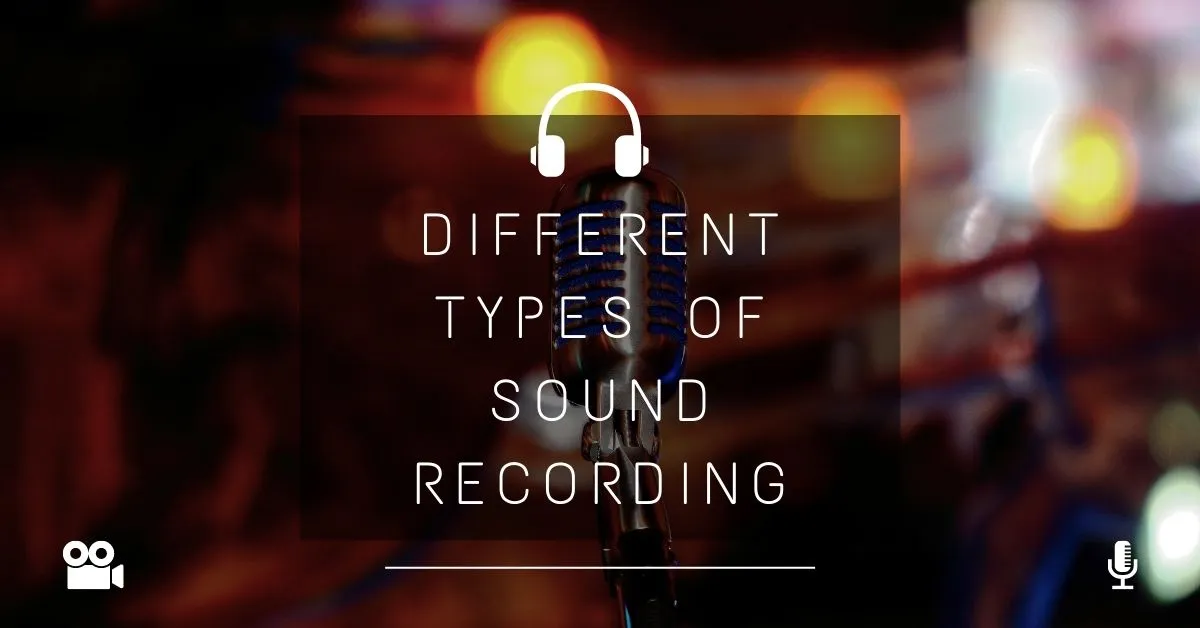


09, August 2023
In the vast world of audio production and music creation, sound recording is the cornerstone of bringing artistic visions to life. From capturing the raw energy of a live performance to meticulously crafting intricate studio tracks, different types of sound recording techniques play a crucial role in shaping the final auditory experience. Let's delve into the diverse methods of sound recording and understand how each contributes to the rich tapestry of sound.
Live sound recording involves capturing a performance in real-time, whether it's a concert, a theatre production, or any other event. This type of recording demands quick thinking and adaptability, as there's no room for retakes. The goal is to preserve the energy and atmosphere of the performance while ensuring the technical quality is up to par. Live sound engineers use a combination of microphones, mixing consoles, and recording equipment to capture the essence of the moment.
In a controlled environment like a recording studio, artists and engineers have the luxury of meticulous planning and multiple takes to achieve perfection. This type of recording allows for precise manipulation of various elements like microphone placement, acoustics, and post-production effects. Studio recording is often used for producing albums, commercials, podcasts, and more. It's an intricate process that involves a deep understanding of equipment, sound dynamics, and creative vision.
Field recording involves capturing sounds from the environment, whether it's the chirping of birds, the bustling of a city street, or the rustling of leaves in a forest. These recordings serve as a valuable resource for sound designers, filmmakers, and musicians who seek to incorporate authentic ambient elements into their projects. Field recordists use specialized microphones and portable recording devices to capture the subtleties of the world around us.
Overdubbing, often referred to as "tracking," is a technique used primarily in studio recording. It involves recording additional musical elements, such as vocals, instruments, or effects, over an existing track. This method allows artists to create complex arrangements and add depth to their compositions. Overdubbing is a staple in modern music production, enabling artists to build rich and intricate soundscapes.
Multi-track recording involves recording and storing individual audio sources on separate tracks. This technique allows for greater control during the mixing and editing phases, as each element can be adjusted independently. Musicians can record different instruments and vocals separately and later blend them into a cohesive mix. Multi-track recording revolutionized the music industry, giving rise to innovative production techniques.
Binaural recording aims to replicate the way humans perceive sound in three dimensions. By using two microphones placed strategically to mimic the positioning of human ears, binaural recordings create a sense of depth and spatial realism when listened to with headphones. This technique is particularly popular in creating immersive audio experiences, such as ASMR content and virtual reality environments.
Sound recording is a multifaceted art form that encompasses various techniques, each serving a unique purpose in the creation of auditory content. Whether it's capturing the magic of a live performance, sculpting intricate studio tracks, or immersing listeners in binaural environments, the world of sound recording offers endless possibilities for creativity and expression. Understanding these different types of sound recording can empower aspiring audio professionals and enthusiasts to navigate the sonic landscape with confidence and innovation.